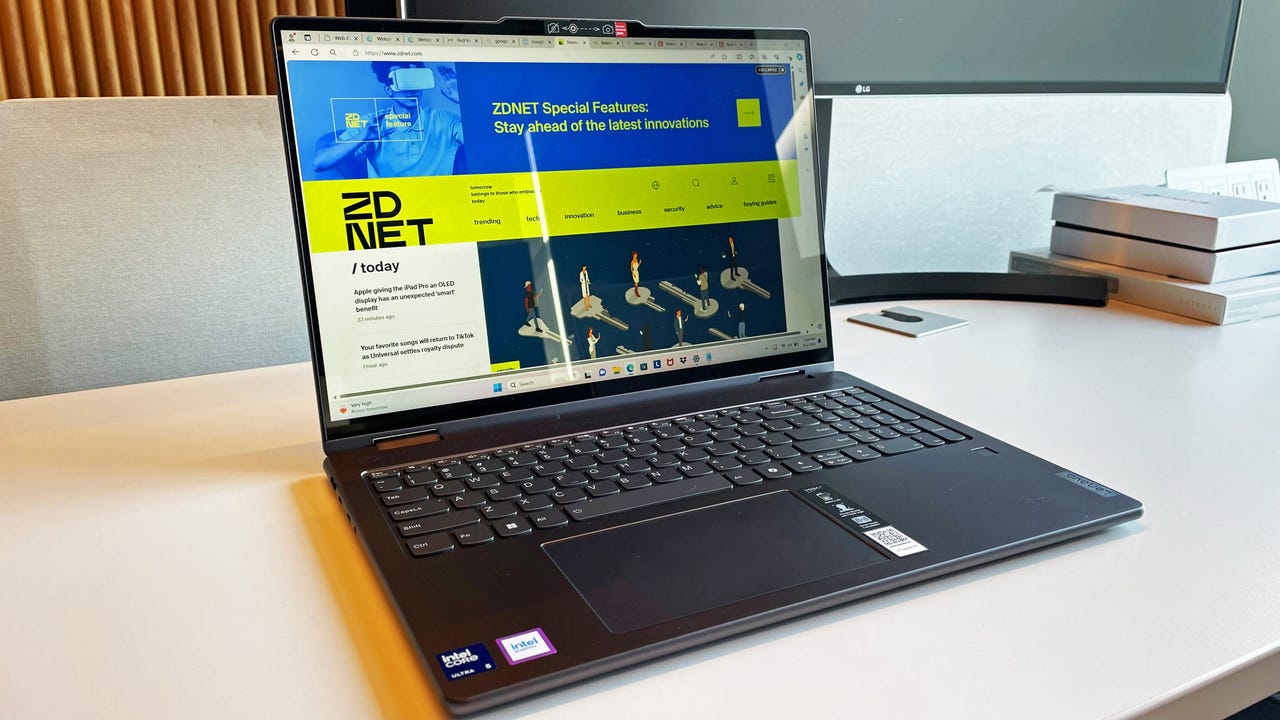'ZDNET Recommends': What exactly does it mean?
ZDNET's recommendations are based on many hours of testing, research, and comparison shopping. We gather data from the best available sources, including vendor and retailer listings as well as other relevant and independent reviews sites. And we pore over customer reviews to find out what matters to real people who already own and use the products and services we’re assessing.
When you click through from our site to a retailer and buy a product or service, we may earn affiliate commissions. This helps support our work, but does not affect what we cover or how, and it does not affect the price you pay. Neither ZDNET nor the author are compensated for these independent reviews. Indeed, we follow strict guidelines that ensure our editorial content is never influenced by advertisers.
ZDNET's editorial team writes on behalf of you, our reader. Our goal is to deliver the most accurate information and the most knowledgeable advice possible in order to help you make smarter buying decisions on tech gear and a wide array of products and services. Our editors thoroughly review and fact-check every article to ensure that our content meets the highest standards. If we have made an error or published misleading information, we will correct or clarify the article. If you see inaccuracies in our content, please report the mistake via this form.
This affordable Lenovo laptop made me a believer in the 2-in-1 form factor

ZDNET's key takeaways
- The Lenovo Yoga 7i 2-in-1 starts at $899 for the Intel Core Ultra 5, 16GB of RAM, and 512GB SSD configuration.
- It's a sturdy 2-in-1 laptop with solid hardware that feels well-optimized however way you fold it.
- All the configuration swapping brings some quirks, and the display is a little dim.
Lenovo's Yoga line of laptops is designed to challenge assumptions about what a portable computer looks like and how you interact with it.
The Yoga Book 9i, for example, throws the notion of a laptop with a single screen into the air, thanks to a dual-screen design, stackable displays, and myriad of flexible configurations, resulting in a product unlike anything else on the market. The Yoga 7i 2-in-1, its less-expensive cousin -- and the device I'm reviewing here -- has slightly less ambitious aims but is no less bold in its design.
Also: I replaced my desktop with a $299 laptop for a week and was pleasantly surprised
The Yoga 7i is a 16-inch laptop, a tablet, and a tabletop screen in one device, and, notably, it works in all three of these configurations really well. All too often, ambitious design elements result in weird hybrids that are a jack of all trades, but master of none. The Yoga 7i, however, feels natural and functional in each mode.
View at Best BuyThis is partly due to the ease of swapping between configurations: Fold the keyboard back, and the screen swaps to portrait mode. Pop it into the "tent" position and it auto-adjusts accordingly. This snappy responsiveness is what makes the latest Yoga 7i feel like a truly flexible 2-in-1, something Lenovo seems to have spent a lot of time optimizing. (I did, however, encounter a few quirks that I'll touch on shortly.)
The Yoga 7i is sleek and quite thin, but it isn't particularly light. At 4.6 pounds, it skews a little on the heavier side, with most of its weight coming from the 16-inch screen. Still, it feels solid and sturdy overall.
The pair of hinges that connect the two halves of the device feel well-made and physically strong. Their high level of resistance results in a laptop with minimal screen wobble, as it stands up well against the pressure from a finger or a stylus; you really have to push for it to go down, and during normal use remains firmly locked into place.
Also: The best laptops for college you can buy: Expert tested
The build quality on the aluminum chassis feels high-end, and the rounded edges are satisfying and tactile, a nice deviation from the sharper corners of competing systems. I appreciate the port selection on the Yoga 7i: two USB-A ports on one side, two USB-C ports on the other, an HDMI port, and a microSD slot.
Swapping to tablet mode is done by folding the keyboard all the way back until it's flush with the back of the display. It snaps into position quickly and the display reorients to portrait mode smoothly.
I did encounter some limitations with the Yoga 7i, however. First, the on-screen keyboard in tablet mode can be hit-or-miss. It pops up immediately in fields like the browser's URL bar, but it requires manual activation in other places. For example, the search bar on the Windows taskbar or text fields within other apps requires back-and-forth clicking to get the keyboard to pop up.
Also, swapping between these two modes disabled the trackpad in one instance, forcing me to go into the settings to re-enable it. I did some digging but ultimately couldn't locate the setting or shortcut that caused this.
Also: I tested Dell's XPS 13 and its eye-catching design is its second-best feature
The 16-inch, full-HD display looks good enough, but maxing out at 300 nits, it's not exceedingly bright. Don't expect to use this screen outside in sunlight (yes, I tried -- it did not go well). In addition, the 60Hz refresh rate is fine for everyday use but may not be enough for creators, digital artists, or serious gamers.
Fortunately, the touchscreen is functional and dynamic and adds another dimension to Windows that allows for more flexible usage. The best part is the fact that you don't have to commit to one form factor or another; you can use the touch commands for certain functions (arranging windows and swapping between desktops, for example) while using a mouse for other functions.
The Yoga 7i comes with an Intel Core Ultra 5 (a snappy new processor, even if it's in the mid-to-low range of the consumer market) that can handle a wide range of tasks with ease. (This is the same processor as in HP's similarly-priced, similarly-specced Envy 2-in-1).
In my time with the Yoga 7i, I had no issues with stuttering, lag, or slow startups while moving between apps. The Intel Iris Xe graphics card on the laptop also performs rather well; I fired up a few mid-range games, and they played fine, despite this machine not being something I would typically recommend for gaming. Obviously, heavier, more graphics-intensive titles will be harder to run smoothly.
Also: The best budget gaming laptops: Expert tested
The 16GB of RAM and 512GB SSD are enough storage for most people looking for a flexible 2-in-1 for work, school, or personal use. I recommend upgrading to the roomier 1TB SSD configuration, if possible, which will bump the price to just above $1,000 but future-proof the machine.
ZDNET's buying advice
The Lenovo Yoga 7i has its quirks, but it's part of a solid line of devices on a noble mission: reimagining the laptop experience. The combination of the touchscreen and flexible configurations invites the user to free themselves from the confines of a single form factor, and its sturdy, high-end build supports all the physical bending, adjusting, and positioning.
I recommend the Yoga 7i for users who want a powerful laptop but also have use for a tablet. In this sense, the Yoga 7i offers the best of both worlds.
